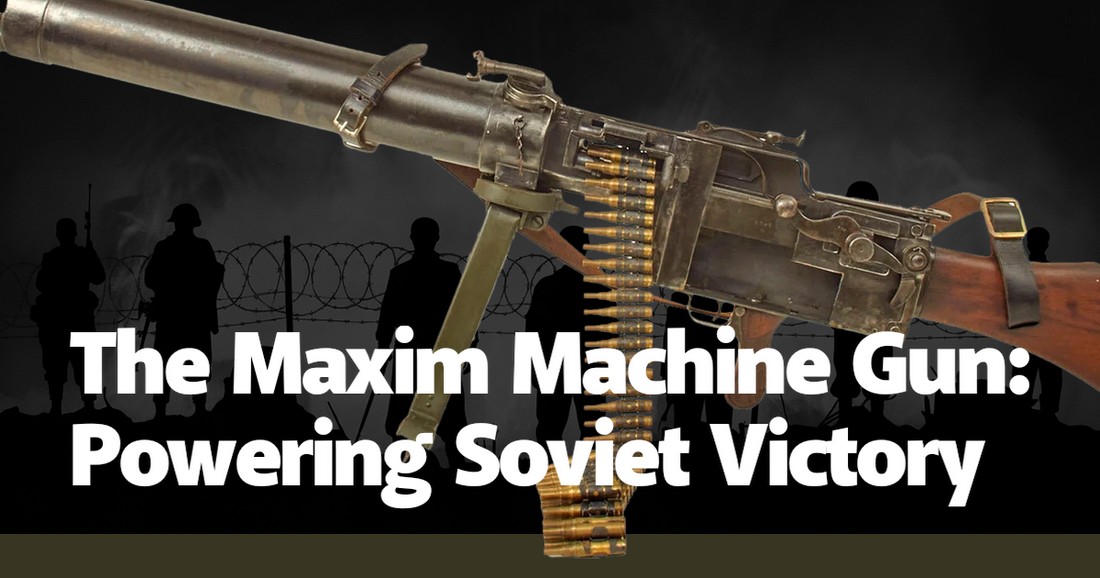The Maxim machine gun, a revolutionary invention by Hiram Maxim in 1884, fundamentally altered the landscape of warfare. Its significance in Soviet military history is monumental, providing a backbone for their infantry and symbolizing the relentless industrial might of the Soviet Union. The Maxim gun, with its water-cooled barrel and gravity-fed ammunition belt, was a marvel of engineering that could sustain prolonged fire. This capability made it indispensable during the grueling battles of the Eastern Front in World War II. The Soviet adaptation of the Maxim, designated the PM M1910, became a symbol of Soviet resilience and ingenuity, playing a pivotal role in their eventual victory over the Axis powers.
The PM M1910 was not merely a weapon; it was a testament to the Soviet Union's ability to adapt and innovate under pressure. As the German Wehrmacht advanced with Blitzkrieg tactics, the Soviet forces needed a reliable and effective means to stem the tide. The Maxim gun provided just that. Its robust design allowed it to endure the harsh Russian winters, and its water-cooling system prevented overheating during extended engagements. This reliability was crucial during key battles such as the Siege of Leningrad and the Battle of Stalingrad, where continuous firepower was essential to holding defensive positions against relentless German assaults.
One of the most compelling anecdotes highlighting the Maxim's impact is the defense of Pavlov’s House during the Battle of Stalingrad. A small group of Soviet soldiers, armed with a PM M1910, held off waves of German attacks for nearly two months. The Maxim’s sustained fire capability allowed these defenders to maintain a withering barrage, inflicting heavy casualties and buying precious time for Soviet reinforcements. The gun’s presence on the battlefield was a psychological as well as a tactical advantage, demoralizing enemy troops who faced its relentless fire.
The Maxim gun's design also facilitated mass production, a critical factor in the Soviet war effort. Factories across the Soviet Union churned out thousands of these machine guns, ensuring that nearly every infantry unit could be equipped with one. This widespread availability meant that Soviet forces could establish formidable defensive lines and conduct effective counterattacks. The gun’s simplicity and durability also meant that it could be operated by relatively inexperienced soldiers, a crucial advantage given the high turnover rates and the need to quickly train new recruits during the war.
The psychological impact of the Maxim gun on both Soviet and German troops cannot be overstated. For Soviet soldiers, the steady rhythm of the Maxim’s fire was a source of reassurance and morale. It symbolized the unyielding strength of their defense and their ability to strike back against the invaders. For German soldiers, the distinctive sound of the Maxim was a harbinger of death, a constant reminder of the formidable opposition they faced. This psychological warfare aspect was as important as the physical damage inflicted by the gun.
In addition to its battlefield prowess, the Maxim gun became a symbol of Soviet industrial and military might. Propaganda posters and films often featured the Maxim, portraying it as a key element of Soviet strength and resilience. This imagery helped to galvanize the Soviet populace, fostering a sense of unity and purpose in the face of the existential threat posed by the Axis powers. The Maxim gun, therefore, was not just a tool of war but also a powerful symbol of Soviet resolve.
Post-war, the legacy of the Maxim machine gun continued to influence Soviet and global military doctrine. Its design principles can be seen in subsequent machine guns, and its role in Soviet victory became a case study in military academies worldwide. The lessons learned from its deployment—about the importance of sustained fire, reliability, and psychological impact—shaped future military strategies and weapon designs. The Maxim’s influence extended far beyond the battlefield, affecting military theory and practice for decades to come.
In conclusion, the Maxim machine gun was a cornerstone of Soviet military success during World War II. Its technical innovations, battlefield performance, and symbolic power contributed significantly to the Soviet Union's ability to repel the Axis invasion and ultimately secure victory. The Maxim gun exemplifies how a single piece of technology can alter the course of history, serving as a testament to human ingenuity and the relentless drive for survival and victory in the face of overwhelming odds.

